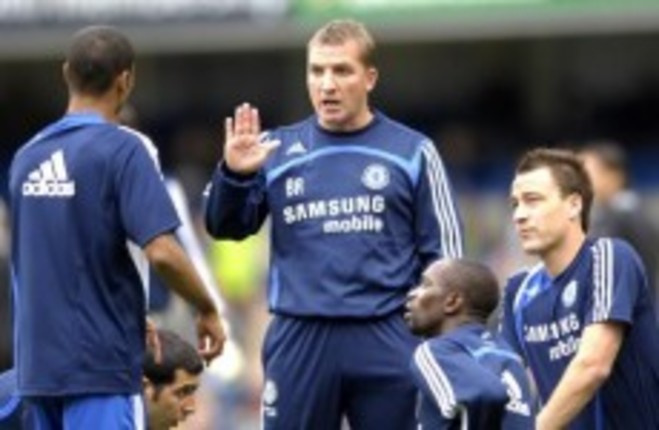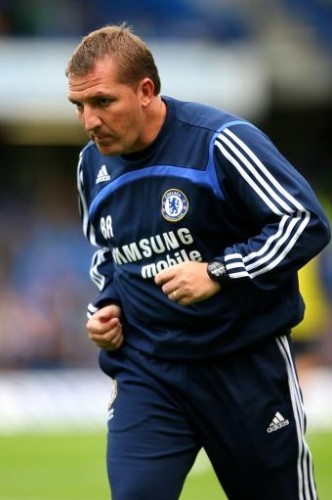WHEN JOSÉ MOURINHO waltzed into Stamford Bridge with that press conference in June 2004, talk immediately turned to the plethora of signings Roman Abramovich was to bankroll.
Ultimately, despite the club spending a whopping £92 million on eight overseas players, ambitious deals for Deco and Steven Gerrard never came to fruition for Mourinho.
Instead, alongside the arrival of the likes of Didier Drogba, Tiago and Mateja Kežman, Mourinho’s overhaul was centred on figures the Portuguese had previously worked with.
While Ricardo Carvalho and Paulo Ferreira stole the headlines, perhaps the most crucial aspect of this policy was Mourinho appointing four of his own coaching staff from Porto.
Indeed, the only British member of Mourinho’s front-line coaching staff was Steve Clarke, who had previously coached in Chelsea’s Academy.
While Rui Faria (methodology) and André Villas-Boas (analysis) would prove cornerstones of Mourinho’s success at Chelsea, Clarke was the Portuguese’s trusted confidante and soundboard.
Having played for Chelsea for 11 years, between 1988 and 1999, Mourinho valued the Scot’s input hugely.
This relationship would prove crucial for Brendan Rodgers.
After all, having previously met Rodgers on a pro-license course, it was Clarke who put the Carnlough man’s name forward for the vacant role as Chelsea’s head youth coach.
Having already lined up Gus Poyet for the role, Mourinho, nonetheless, heeded Clarke’s advice and interviewed Rodgers.
Mourinho was struck by the 31-year-old’s career path – with Rodgers having even travelled to Spain to study coaching methods – and the Portuguese soon gave his blessing to the appointment.
Within a year, Rodgers was joined by Frank Arnesen – who was poached as Chelsea’s director of youth and development for £6 million from Tottenham.
“Brendan was different from other British coaches,” Arnesen told TheScore.ie.
“He was very international and was always asking about how they did things at Ajax and where I’d been. When I arrived, he had already studied Spanish for one year. Without living permanently in Spain, he spoke very good Spanish! Of course, there were so many players coming from all over the world so it really benefited them.
“Brendan was very organised, unbelievably so. He always created a very good atmosphere in the team. They trained very hard and he always had a new theme for each session. He was only 32, but was already a big talent.
“When I arrived, I decided that all the club’s teams – from under-12 to reserve – should play 4-3-3 with a number 10 and play out from the back. Brendan took that on board very quickly. That idea of playing attacking football, with wingers, and scoring goals – he did all that at Chelsea.
“Brendan was a very good coach, who loved his coaching and was big on strategy. He was very good with the players and never really needed to shout to be respected. The players knew that because he was so prepared, they had to respect him. They couldn’t do anything else; what he was doing was right.”
For years, much has been made of Mourinho’s influence on his fellow staff – with the Portuguese, himself, having served a crucial eight-year apprenticeship under Sir Bobby Robson and Louis van Gaal.
Quite tellingly, within years of being given their first break by Mourinho, Clarke, Villas-Boas, and Rodgers would all go on to manage at the highest level but the trio had to leave Stamford Bridge to do so.
Indeed, despite being promoted as the club’s reserve team manager in 2006, Rodgers departed for Watford two years later.
“In the first couple of years, Neil Bath and myself were running the Academy. José didn’t really have a lot of time to be involved and was concentrated on the first-team. But, José always talked to the coaches and Brendan was one of those who went asking. Brendan had the chance to talk to him when he finished training and he would’ve spoken a lot with José.
“With Avram Grant, we had Henk ten Cate as his assistant and with Scolari, he brought in four of his own staff before Ray Wilkins arrived. So, Brendan developed, by himself, and I think it was the right thing for him to eventually say, ‘Listen, I probably can’t come through here’.
“He had a very strong personality and I don’t think Brendan saw himself as an assistant manager. That’s why, quite quickly, he jumped at the opportunity to go out on his own. He was still only 35, but he would do very well.”
Before leaving for Watford, Rodgers, perhaps, had his most crucial year of development in his second year as reserve team coach.
It coincided with Avram Grant’s eight-month managerial reign in 2007-08 and such was the duo’s close bond, the Israeli even joined Rodgers for the Milk Cup draw in Belfast just a week before the 2008 Champions League final.
“I remember a young guy, who was very curious to learn and had some strong opinions,” Grant told TheScore.ie.
“I liked how he did things, as he had an opinion on what you do and what you have to do. Brendan was always reading and asking, ‘Why?’ That was quite a novelty in those days, as people didn’t always ask ‘Why are we pressing?’ or ‘Why are we behaving like this?’ Brendan was very good at this and I enjoyed working with him a lot.
“He cared a lot about home, and I was so impressed by him wanting to go over for the draw to give something back.
“Brendan had a philosophy, but I’m not sure if he was certain what exactly it was at the time. He wasn’t a prisoner to ideas. Of course, he worked previously with José and liked him, but, personally, I think he had his own personality. Some people see other coaches and want be just like them; you need to learn yourself.”
Having finished runners-up in the Premier League, the Champions League, and the League Cup, Grant was dismissed by Roman Abramovich at the end of the season.
Rodgers, himself, would leave the club just six months later and Grant has not been surprised by the evolution of the Northern Irishman since.
“I think Chelsea was crucial in the beginning: every one of those four years was important for him.
“Even later, when he had a bad year at Reading, that was important.
“Brendan always showed that he had something of his own when he spoke positively about José or Sir Alex Ferguson or Arsène Wenger. I’m not surprised he’s gone on to be a success: he always had potential.
“You can be one of the best, whether you’re young or old; Sir Alex Ferguson was 72 when he retired, but was still more modern than most! Brendan was very modern in always asking ‘Why?’ when explaining things to his players. Also, he’s not stubborn and this, along with a vision, is a key quality for a good coach.
“This is only the beginning for him.”



